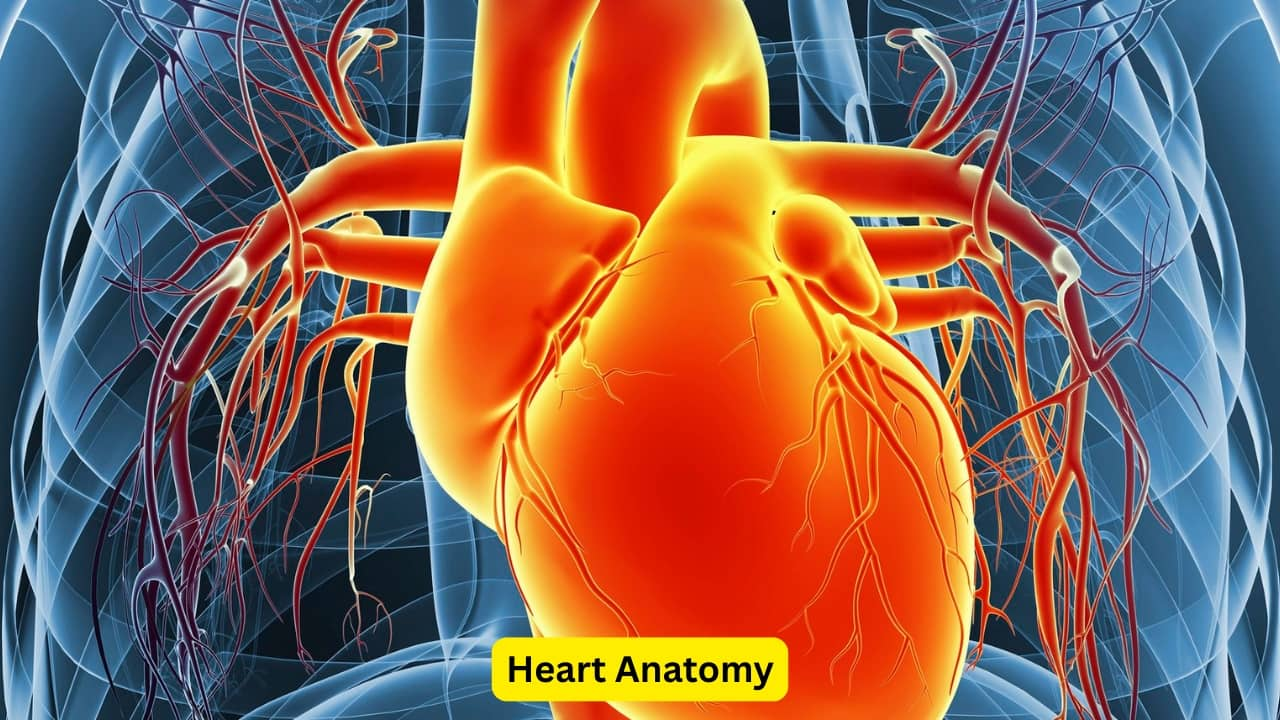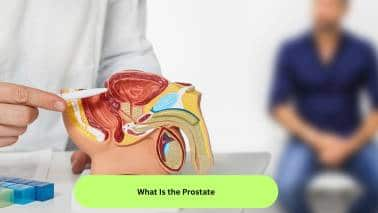
HEALTH-AND-FITNESS
What is diabetic retinopathy: Symptoms, causes, and ways to prevent blindness
Diabetic retinopathy is a common diabetes-related eye complication caused by retinal changes. Risk factors include long diabetes duration, female gender, heredity, pregnancy, hypertension, smoking, obesity, and hyperlipidemia. Prevention involves strict blood sugar, blood pressure, and cholesterol control, healthy lifestyle, medications, and regular ophthalmic screening to detect and manage early changes.

HEALTH-AND-FITNESS
A simple guide to seizures and fainting: It's causes, symptoms, and care
Seizures are sudden, uncontrolled CNS discharges, often without triggers, causing immediate unconsciousness, facial changes, frothing, and post-event disorientation. Syncope is brief fainting due to reduced blood flow, often triggered by stress or position change. Diagnosis relies on duration, symptoms, and posture; management includes anti-epileptics for seizures and treating underlying causes for syncope.

HEALTH-AND-FITNESS
Conjunctivitis: 10 symptoms, causes, how it spreads, and preventive tips
The conjunctiva is a thin protective layer of the eye. Conjunctivitis can be caused by bacteria, viruses, fungi, parasites, or allergies. It can spread through dirty hands, poor hygiene, flies, or by sharing personal items. Common symptoms include redness, swelling, watery or sticky discharge, itching, and pain. Prevention requires hygiene and avoiding shared items. Treatment may include antibiotic or antiviral eye drops, and washing the eyes with clean water.

HEALTH-AND-FITNESS
10 things to know about pneumonia: It's causes, risk factors, symptoms, and management
Pneumonia is an acute inflammation of the lung parenchyma, often filling alveoli with fluid. Causes include bacteria, aspiration, radiation, and poor hygiene. Risk factors are age, co-morbidities, smoking, alcohol, and low immunity. Symptoms include fever, chills, cough, chest pain, and delirium. Diagnosis uses CURB 65; treatment includes antibiotics and oxygen.

HEALTH-AND-FITNESS
What is external auditory canal? All about its structure, disorders, and infections
The external auditory canal conducts sound and protects inner ear structures. Disorders include congenital atresia, impacted wax, lacerations, furuncles, diffuse otitis externa, fungal infections, malignant otitis externa, eczematous otitis, and neurodermatitis.

HEALTH-AND-FITNESS
Cataract symptoms, causes and best treatment options to protect your eye lens
Cataract is the development of lens opacity, either congenital or age-related. Causes include genetics, maternal factors, UV exposure, poor diet, smoking, and diabetes. Symptoms include glare, double vision, halos, and gradual painless vision loss.

HEALTH-AND-FITNESS
10 facts about leukoplakia: Characteristics, risk factors, and management
Leukoplakia is a common premalignant white patch in the oral cavity, often caused by smoking, alcohol, spicy foods, and irritation from sharp teeth. It typically affects those over 40 and can become cancerous. Treatment includes lifestyle changes, lesion excision, medications like isotretinoin, and regular medical follow-up.

HEALTH-AND-FITNESS
What is otosclerosis? 10 causes, symptoms, and important surgical points
Otosclerosis is an inner ear condition where abnormal bone growth, often at the stapes, causes progressive hearing loss. Common in young adults, it may worsen during pregnancy. Symptoms include tinnitus, giddiness, and paracusis willisii. Treatment involves surgery or hearing aids, with precautions like avoiding air travel and heavy lifting post-surgery.

HEALTH-AND-FITNESS
10 things to know about rheumatoid arthritis: Causes, symptoms and more
Rheumatoid arthritis is a chronic inflammatory disease affecting multiple joints and systems, mainly adults. Genetic and environmental factors, including smoking, contribute. Symptoms include joint pain, stiffness, deformities, anemia, and eye issues. Management includes medications, gentle exercise, stress relief, and smoking cessation to improve quality of life and slow progression.

HEALTH-AND-FITNESS
10 things to know about peptic ulcers : Causes, risk factors and more
Peptic ulcers are breaks in the mucosal lining, often affecting the duodenum. Common causes include Helicobacter pylori, NSAIDs, smoking, alcohol, stress, and certain therapies. Symptoms include burning abdominal pain, heartburn, and appetite loss. Management involves avoiding triggers, using antacids, and in severe cases, surgery to treat complications like perforation or bleeding.

HEALTH-AND-FITNESS
10 smart ways to manage psoriasis flare-ups: Prevention, treatment and more
Psoriasis, a long-term inflammatory skin disease, may occur due to certain genetic factors, that may combine with triggers to produce the condition. Better control of symptoms together with reduced long-term risks becomes possible through understanding the different types of psoriasis and their symptoms and treatment methods.

HEALTH-AND-FITNESS
10 warning signs your thyroid hormones may be out of control
Thyrotoxicosis is caused by elevated levels of thyroid hormones (T3 and T4), often due to hyperthyroidism. Symptoms include weight loss, increased appetite, palpitations, breathlessness, tremors, sweating, and eye bulging. Diagnosis involves thyroid function tests and antibody levels.

HEALTH-AND-FITNESS
10 facts about aortic stenosis you should know
Aortic stenosis is a progressive narrowing of the aortic valve, reducing blood flow from the heart. Common in older adults, it causes breathlessness, chest pain, and fainting on exertion. Diagnosis involves imaging and ECG. Severe cases may need surgery. Avoiding strenuous activity is essential, especially in symptomatic individuals.

HEALTH-AND-FITNESS
What is vasal polyps? 10 things to know about mucosal overgrowth in the nose
Nasal polyps are soft, non-cancerous growths in the nasal or sinus lining, often linked to chronic rhinosinusitis, asthma, allergies, and aspirin intolerance. They cause nasal obstruction, loss of smell, and headaches. Diagnosis is clinical, and treatment ranges from antihistamines to surgical removal through functional endoscopic sinus surgery (FESS).

HEALTH-AND-FITNESS
10 step guide to understanding breast cancer— Risk factors, genetics and importance of early detection
Breast cancer is a common malignancy in women with multiple risk factors including genetics, early menarche, late menopause, obesity, nulliparity, late childbirth, HRT, radiation exposure, and family history. Diet, lifestyle, and self-examination play key roles in prevention and early detection. Early diagnosis greatly improves outcomes and survival rates.

HEALTH-AND-FITNESS
Understanding palatine tonsils and tonsillitis: Structure, function, symptoms, and treatment
Palatine tonsils protect against infections by detecting and destroying pathogens. Most active in children, tonsils can become inflamed, causing tonsillitis—acute or chronic—due to viruses or bacteria. Symptoms include sore throat, fever, and swelling. Treatment involves rest, fluids, and antibiotics if bacterial infection is suspected.

HEALTH-AND-FITNESS
10 tips to keep your brain young— Physically and mentally
Staying physically active slows cognitive decline, preserves brain structure, boosts memory, reduces mortality risk, and supports mental performance and long-term health resilience

HEALTH-AND-FITNESS
Understanding allergic rhinitis and its impact, symptoms and prevention
Allergic rhinitis is an immune response of the nasal mucosa to airborne allergens like pollen, dust mites, and dander. It may be seasonal or perennial and is influenced by genetics. Symptoms include sneezing, nasal discharge, itching, and congestion, with phases of acute and delayed responses. Clinical signs such as a nasal crease and eyelid swelling help diagnosis. Complications include sinusitis, nasal polyps, and asthma. Management focuses on allergen avoidance through hygiene measures, environmental control, and dietary adjustments.

HEALTH-AND-FITNESS
10 things you should know about chronic suppurative otitis media
Chronic suppurative otitis media is a persistent middle ear infection marked by discharge and eardrum perforation. Complications range from facial paralysis to meningitis. Risk factors include age, poor hygiene, and immunosuppression. Diagnosis involves imaging, and treatment includes antibiotics, aural toilet, and possibly surgery like tympanoplasty or mastoidectomy for severe cases.

HEALTH-AND-FITNESS
A 10 step guide in understanding the prostate gland in aging males
Benign prostatic hyperplasia (BPH) is a common, age-related enlargement of the prostate gland in men, causing urinary issues like frequency, urgency, weak stream, and retention. It can mimic other conditions and lead to complications. Proper diagnosis with urine tests, imaging, and PSA levels is essential for effective management and care.

HEALTH-AND-FITNESS
Appendicitis symptoms in adults, causes, and how to avoid rupture or abscess formation
Appendicitis is the inflammation of the appendix, often caused by obstruction or infection. It commonly affects young men and may show seasonal trends. Symptoms include abdominal pain, vomiting, and fever. Risk factors include family history, infections, and bowel diseases.

HEALTH-AND-FITNESS
Peripheral neuropathy: here’s why you might experience tingling and numbness in your limbs
Peripheral neuropathy damages peripheral nerves, causing numbness, tingling, and weakness, often starting in the feet and hands. Causes include vitamin deficiencies, certain medications, alcohol abuse, infections, and chronic diseases like diabetes. Diagnosis involves clinical examination and history. Treatment focuses on correcting causes, reducing toxins, and supportive therapies like physiotherapy.

HEALTH-AND-FITNESS
All you need to know about Buerger’s disease: A preventable vascular threat tied to tobacco use
Thromboangiitis obliterans (Buerger’s disease) is an inflammatory condition affecting small blood vessels, primarily in smokers. It causes pain, reduced circulation, and can lead to gangrene. Symptoms include limb pain, weak pulses, and ulcers. Diagnosis involves vascular tests. Quitting tobacco, proper foot care, exercises, and lifestyle changes are essential for management.

HEALTH-AND-FITNESS
All You Need to Know About Intestinal Obstruction
Intestinal obstruction is a condition where digested food cannot pass through the bowel. It may be mechanical or due to impaired movement. Symptoms include abdominal pain, vomiting, distension, and constipation. Causes range from hernias to infections. Timely diagnosis and treatment, including surgery and supportive care, are essential to prevent serious complications.









